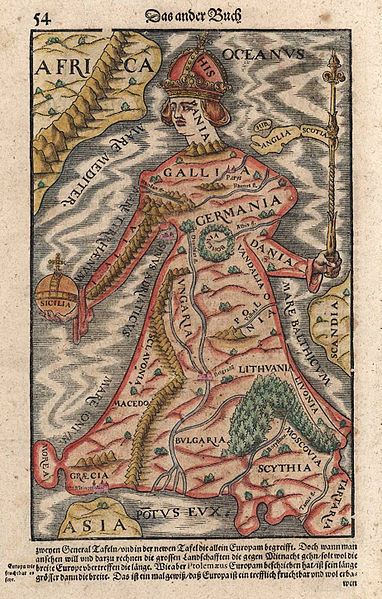Sebastian Münster was a German cartographer and cosmographer. He also was a Christian Hebraist scholar who taught as a professor at the University of Basel. His well-known work, the highly accurate world map, Cosmographia, sold well and went through 24 editions. Its influence was widely spread by a production of woodcuts created of it by a variety of artists.
Portrait of Sebastian Münster by Christoph Amberger, c. 1552
Münster's Cosmographia
Tabula Novarum Insularum, 1540
Statue of Sebastian Münster in front of St. Remigius Church, Ingelheim
Cartography is the study and practice of making and using maps. Combining science, aesthetics and technique, cartography builds on the premise that reality can be modeled in ways that communicate spatial information effectively.
Valcamonica rock art (I), Paspardo r. 29, topographic composition, 4th millennium BCE
The Tabula Rogeriana, drawn by Muhammad al-Idrisi for Roger II of Sicily in 1154. South is at the top.
Europa regina in Sebastian Münster's "Cosmographia", 1570
A pre-Mercator nautical chart of 1571, from Portuguese cartographer Fernão Vaz Dourado (c. 1520 – c. 1580). It belongs to the so-called plane chart model, where observed latitudes and magnetic directions are plotted directly into the plane, with a constant scale, as if the Earth were a plane (Portuguese National Archives of Torre do Tombo, Lisbon).








